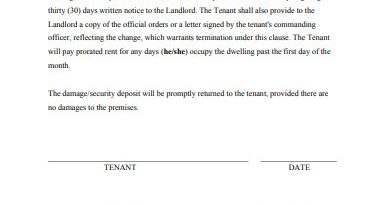M1 Money Supply How It Works and How to Calculate It
Contents
- 1 M1 Money Supply: How It Works and How to Calculate It
- 1.1 What Is M1?
- 1.2 Understanding M1
- 1.3 Money Supply and M1 in the United States
- 1.4 How to Calculate M1
- 1.5 Money Supply and the U.S. Economy
- 1.6 M1 vs. M2 vs. M3
- 1.7 How the M1 Money Supply Changes
- 1.8 Why Is M1 Money Supply So High?
- 1.9 Why Is M2 More Stable Than M1?
- 1.10 Who Controls the M1 Money Supply?
- 1.11 How Does the M1 Money Supply Affect Inflation?
- 1.12 The Bottom Line
M1 Money Supply: How It Works and How to Calculate It
What Is M1?
M1 is the money supply composed of currency, demand deposits, and other liquid deposits, including savings deposits. It contains currency and assets that can be quickly converted to cash. "Near money" and "near, near money" fall under M2 and M3 and cannot be quickly converted to currency.
Key Takeaways
- M1 is a narrow measure of the money supply that includes currency, demand deposits, and other liquid deposits, including savings deposits.
- M1 does not include financial assets, such as bonds.
- The M1 is no longer used as a guide for monetary policy in the U.S. due to the lack of correlation with other economic variables.
- The M1 money supply was more constrictive than the M2 or M3 calculation.
- The M1 money supply is reported monthly by the Federal Reserve Bank of St. Louis.
Understanding M1
M1 money is a country’s basic money supply used as a medium of exchange. It includes demand deposits and checking accounts, commonly used through debit cards and ATMs. M1 is defined narrowly and does not include financial assets, such as bonds. Economists frequently use M1 to reference the amount of money in circulation in a country.
Note that in May 2020, the definition of M1 changed to include savings accounts due to increased liquidity.
Money Supply and M1 in the United States
Until March 2006, the Federal Reserve published reports on three money aggregates: M1, M2, and M3. Since 2006, M3 data is no longer published. M1 covers currency, the most basic payment form. M1 includes currency in circulation, most liquid deposits at commercial banks, excluding those held by the government, foreign banks, or other depository institutions. M2 includes savings account deposits, small-time deposits, and retail money market accounts.
Related to M1 and M2 is Money Zero Maturity (MZM), which includes M1 and all money market accounts, representing readily circulating liquid money in the economy.
The money supply in the United States is graphically depicted by the Federal Reserve. The graphical representation lists the money supply in billions of dollars on the y-axis and the date on the x-axis, regularly updated on the Federal Reserve of St. Louis’ site.
How to Calculate M1
M1 money supply is composed of Federal Reserve notes, coins, traveler’s checks, demand deposits, and other checkable deposits, including certain accounts at depository institutions and credit unions.
For most central banks, M1 includes money in circulation and readily cashable instruments. However, there are slight variations in the definition across the world.
M2 and M3 include all components of M1 plus additional forms of money, such as money market accounts and institutional funds with significant balances.
Money Supply and the U.S. Economy
In the past, measurement of the money supply indicated a close relationship between money supply and economic variables like GDP, inflation, and price levels. However, in recent decades, the relationship has been uncertain. As a result, the significance of the money supply as a guide for monetary policy in the United States has diminished.
M1 vs. M2 vs. M3
M1 includes physical currency, traveler’s checks, demand deposits, and other checkable deposits. M2 includes M1 and "near money". M3 includes all components of M1 and M2, as well as various forms of savings deposits, time deposits, and institutional money market funds, making it the most comprehensive measure of the money supply.
How the M1 Money Supply Changes
Governments intentionally change the money supply to impact the broader economy. For example, during the COVID-19 pandemic, governments increased the M1 money supply to stimulate the economy and support businesses and workers.
Central banks increase the M1 money supply by increasing physical currency in circulation, lending money to banks, or purchasing securities on the open market. Conversely, they reverse these policies to cool the economy and fight inflation.
Businesses and consumer spending also affect the M1 money supply. As consumers and businesses spend more money, the M1 money supply increases.
Why Is M1 Money Supply So High?
In May 2020, the definition of M1 changed to include other liquid deposits, including savings accounts. This change led to a sharp spike in the reported value of the M1 money supply.
Why Is M2 More Stable Than M1?
M2 money supply is more stable than M1 because it includes less liquid assets. While components of M2 may take longer to convert or be liquidated, M1 more frequently changes due to its ease of transacting.
Who Controls the M1 Money Supply?
The total supply of money is managed by the Federal Reserve banks. The Federal Reserve establishes monetary and fiscal policies to influence the economy, create jobs, or combat inflation.
How Does the M1 Money Supply Affect Inflation?
Increasing the money supply makes money easier to obtain. This can reduce debt costs, lower tax liabilities, and provide consumers with more capital to spend. However, increasing the money supply also tends to increase the demand and prices of goods, contributing to inflation.
The Bottom Line
The M1 money supply includes currency, demand deposits, and other liquid deposits. It is a narrow measure of the money supply and plays a role in understanding inflation and managing the economy through fiscal and monetary policies.



